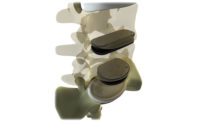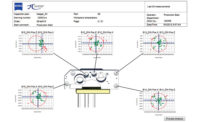Situation
Nelson is an operator on a production line that makes parts from powdered metal. A measured amount of powdered metal is metered into a cavity and then the part is manufactured. Because of a recent reduction in the work force, Nelson is operating a second line.
After several weeks of running the two lines, Nelson has started asking questions. He knows that the two lines were constructed at the same time and that the equipment is the same. However, it appears to Nelson that the weights of the parts from the second line are more variable than the weights from the first line. His supervisor told him not to worry because the weight of every part measured from both lines currently meets specifications.
Available data
Although Nelson measures the weight of the parts on a regular basis, the data values have never been recorded. He decides to record the weights for a couple of days to see if there really is a problem. Data for Oct. 8 and 9 are given in the table, "Weight Data for Parts."
Questions
1. Is Nelson correct in his analysis that the weights of parts from Line 2 are more variable than those from Line 1?
2. Because Nelson is running both lines, what could cause one line to be more variable than the other?
3. After continued questioning, the supervisor tells Nelson that Line 2 has an automatic controlling device that adjusts the amount of powdered metal that is metered into the cavity. What impact could this have on the behavior of the process?
4. How might Nelson test the impact of the automatic controlling device to see if it is causing additional variation in the part weights?
Answers to October Brain Teaser
Q: How do the vendor processes behave for percent stretch of polyester fiber?
A: The percent stretch of fibers from Vendors A and B has a predictable amount of variation but an unpredictable average. The values for Vendor A center around the lower specification, while the values for Vendor B center near the upper specification. The variation for both Vendors A and B is too large for the fibers to meet the stretch specification even if the processes were to average exactly in the center of the specifications. Vendor C is sending fibers that have a predictable average and variation. All of the values are lower than the target of 20%, but the variation in Vendor C's process is about half that of Vendors A and B. Data for all three vendors is shown in the graph, "Percent Stretch of Polyester Fiber from Vendors A, B and C."
Q: Which vendor is doing the best job of meeting the stretch requirements?
A: Vendor C is the only one with a predictable average and variation. Also, the variation for percent stretch for Vendor C's product is sufficiently small so that centering the process on the target will yield a product that consistently can meet requirements.
Q: What short-term actions should Anna take with the vendors?
A: Anna should show her data to Vendor C and ask to have the process centered at 20% for percent stretch of the polyester fibers. She should set up meetings with Vendors A and B to discuss the problems with the variation of their fibers.
Q: What long-term actions should Anna take with the vendors?
A: Long-term actions should focus on evidence provided by process behavior charts from the vendors. This should verify that the product they ship comes from predictable processes with small enough variation to meet requirements. Specifically, Vendors A and B need to take actions to decrease the routine variation in their process as well as center the process on the target of 20% if they are ever going to meet specifications. If these vendors are unable to ship consistent product, Anna should look for vendors who will work with her to meet the requirements.


